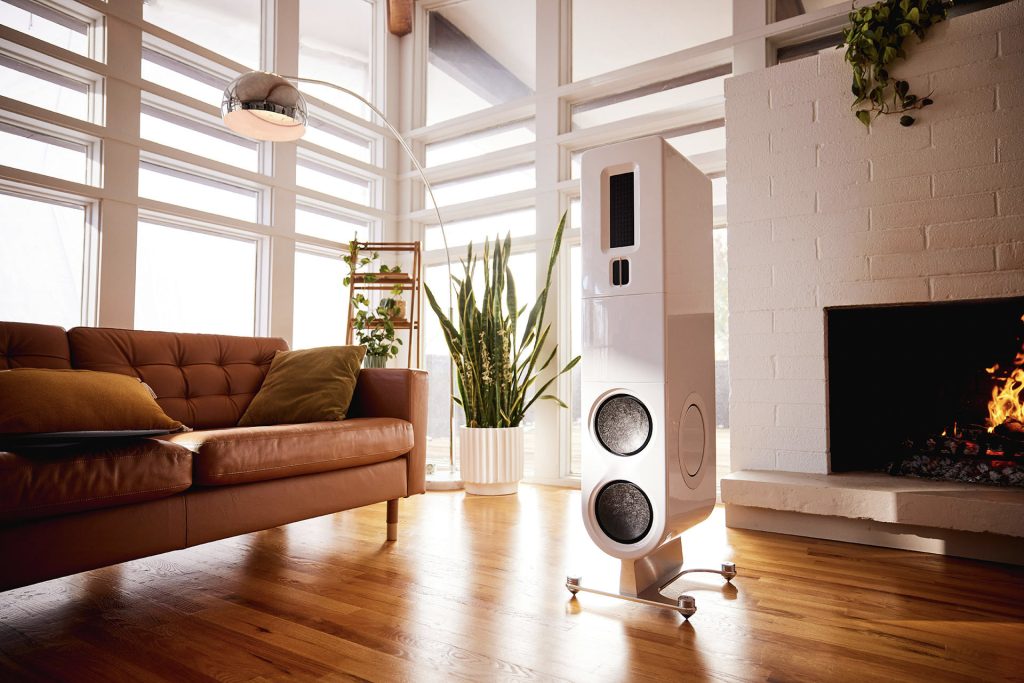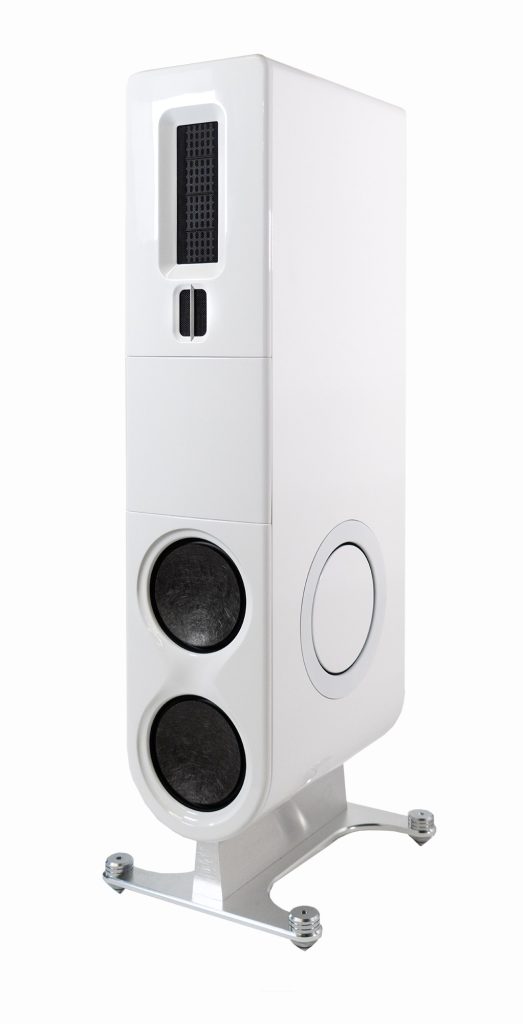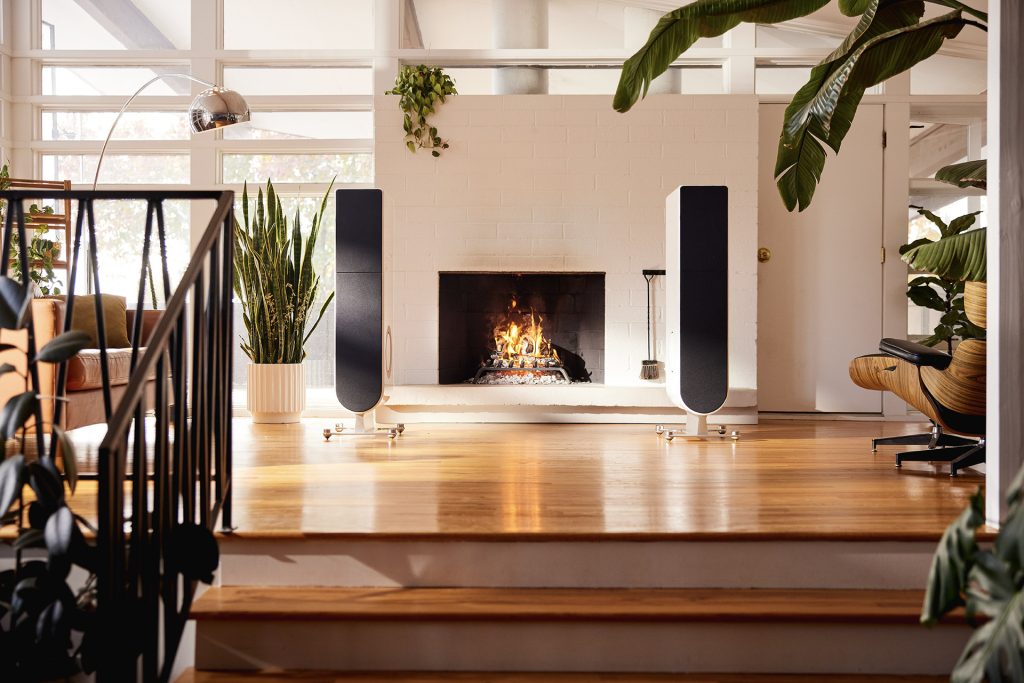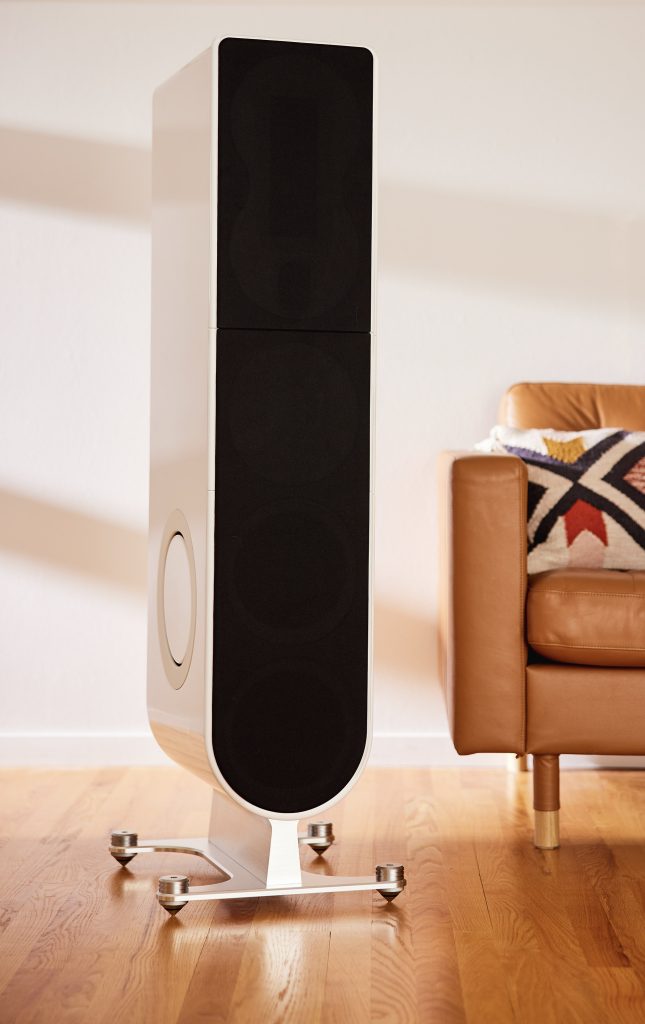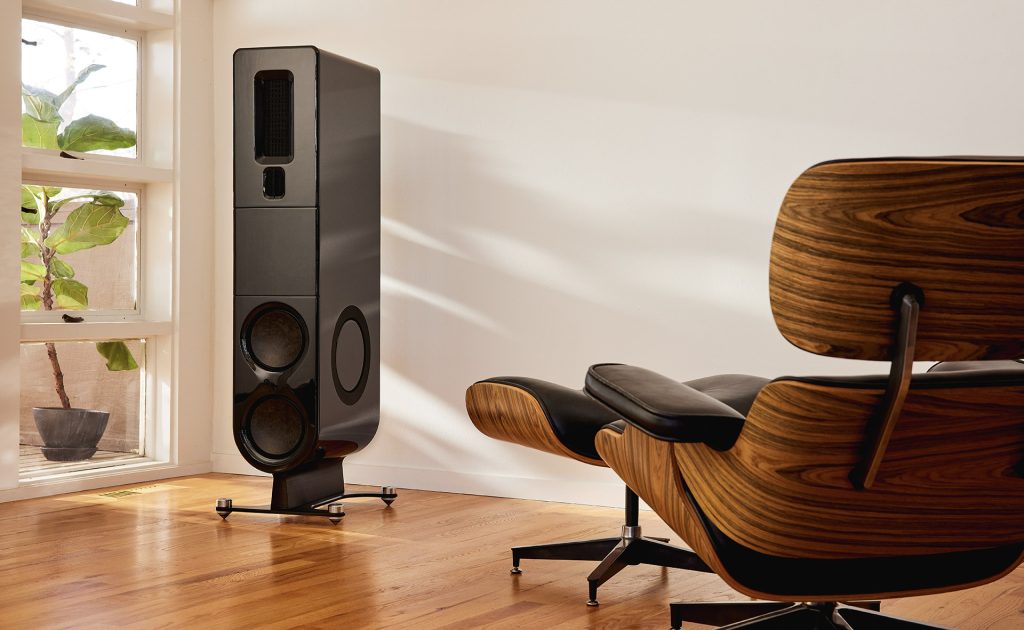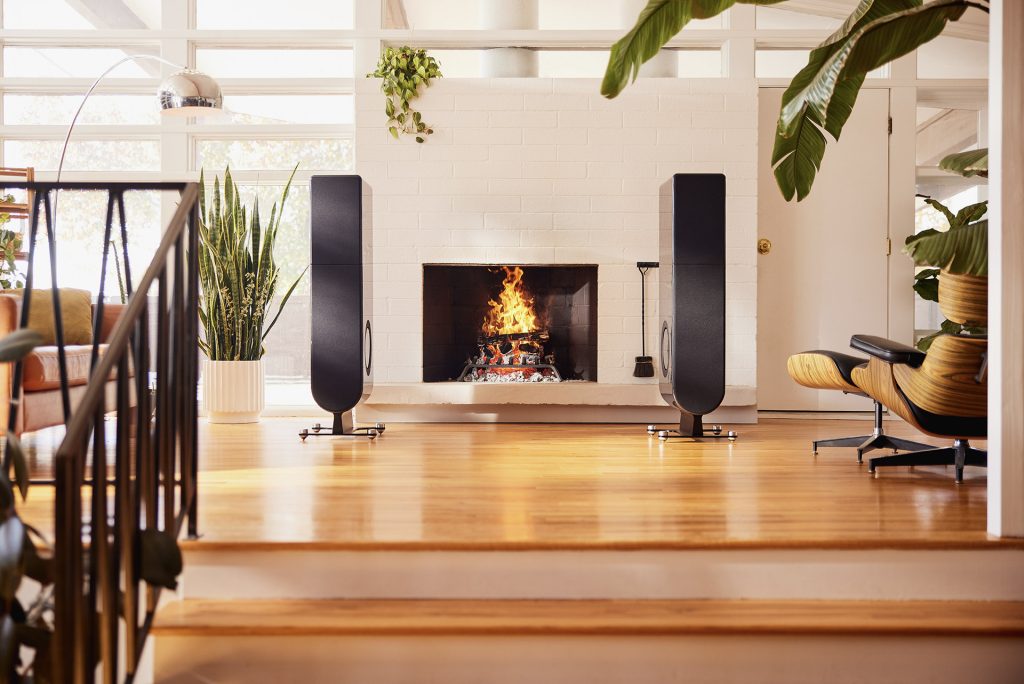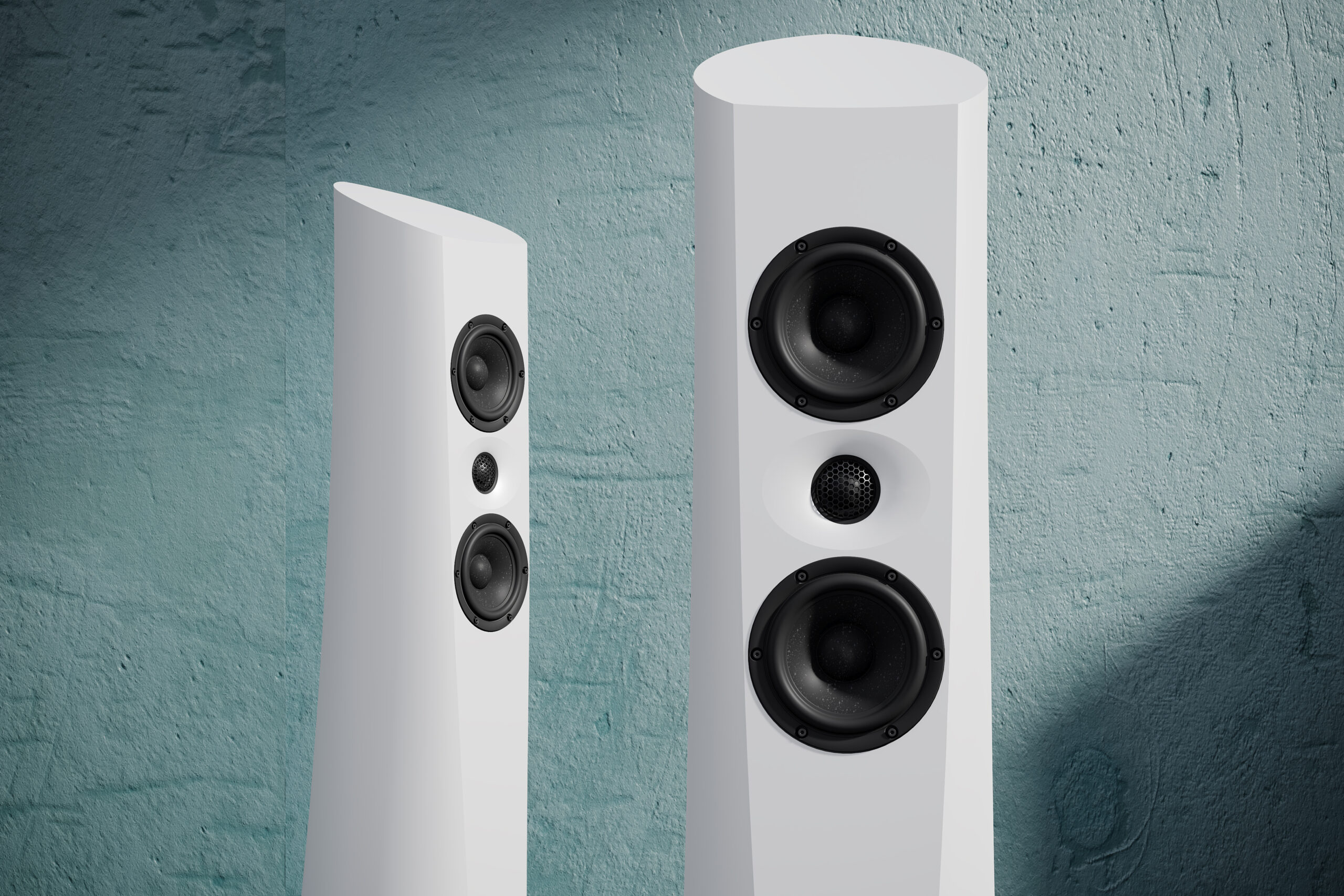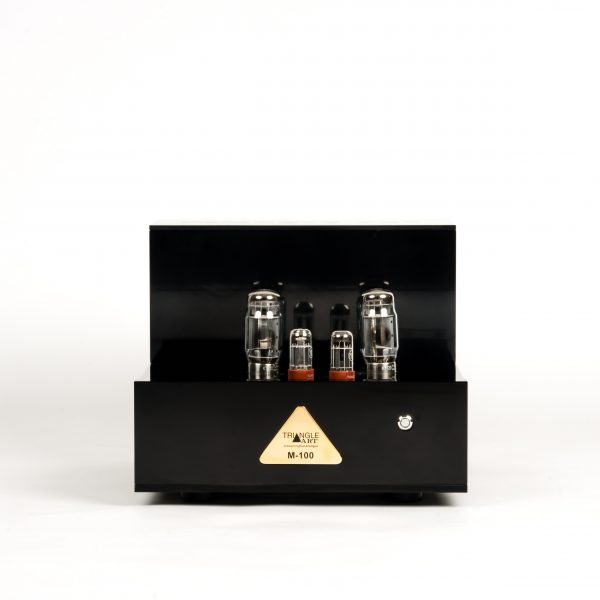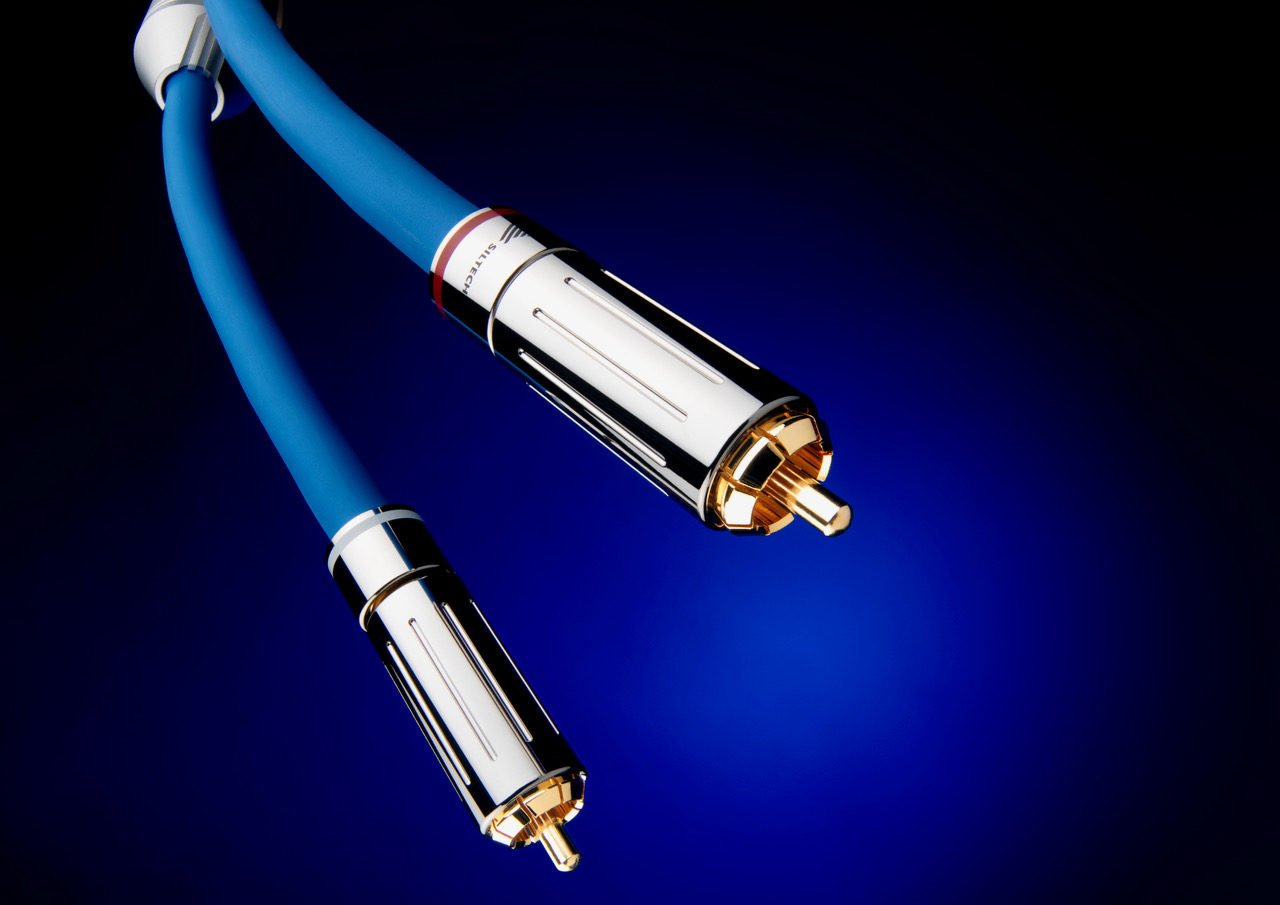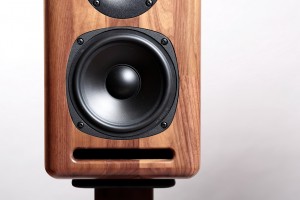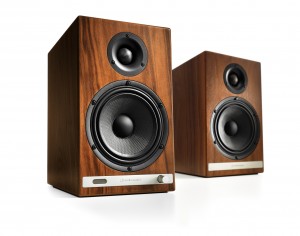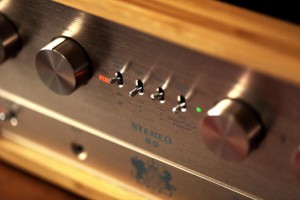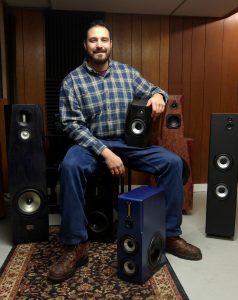So, you've decided it's time to up your audiophile game with a new pair of speakers. It's a very exciting experience that requires one to ask a few key questions. What is the budget? What are your musical tastes? How big is your room? Is it dedicated to home entertainment or is the room multi-use? Once these parameters are defined and the budget is set (though we all know the budget will be loosely adhered to) it's time to plunge into the dizzying array of speakers that fit the bill. In all likelihood you will check out the industry stalwarts; after all, they are omnipresent on every magazine cover and webzine landing page. That's no criticism, it's the nature of all things PR and effective marketing. Throw in a few good reviews and it reinforces that dynamic all the more.
The PS Audio Aspen FR20 is for the music lover who has done their homework, knows what they need, and doesn't follow the pack. At $19K per pair, they are not inexpensive, but neither are they stratospheric in price like so many shiny components that tempt us to spare a kidney. PS Audio is hardly an unknown commodity, with founder Paul McGowan's electronics, and a loudspeaker design pedigree stretching back decades with the Genesis brand of speakers.
With the PS Audio heritage backing them up and the engineering prowess of Chris Brunhaver, plus industrial design by the Canadian firm Studio63, the FR20 is a scaled down version of its big brother the FR30. Chris' extensive history in the designing of audio drivers allowed for custom driver production. The 2.5-inch tweeter and the 10-inch midrange drivers are made from ultra-lightweight Teonex flat-panel diaphragms driven by neodymium motors. The midrange operates from 400Hz -2.5kHz where the tweeter takes it the rest of the way. Where the FR20's big brother FR30 uses four aluminum bass drivers, the two 8-inch bass drivers per side on the FR20 employ carbon fiber skin, coated, super-lightweight Rohacell foam core diaphragms. Two 10-inch side-mounted passive radiators complete the driver complement.
If you like the Apple aesthetic, you will swoon over the FR20. With its rounded corners and slender but deepish profile, the 50.5-inch tall FR20's design is beautifully edited, as are the finishes available. It's a black and white decision, literally—it's either black or white. I requested the white, and boy was I happy when I pulled these out of their well-constructed shipping cartons. The paint job is superb. The 20 coats of hand-rubbed piano lacquer is flawless and in spite of a few all-thumbs moments on my end, the finish proved to be quite durable. With or without the whip-smart magnetically fastened grill cloths, the contrast between the black and white feels just right for the times we live in. Even if your leanings are towards the conventional or traditional, I'm not sure you would warm to the cool and clean FR20.
And that would be a terrible shame my friend, as the FR20s aren't just great in one aspect or the other and merely average or good at the rest, the FR20s are outstanding in every way.
The FR20s sat 10 feet apart and 8 feet from the front wall of my 35 x 60 x 14-foot loft, eliminating near-field reflection points save the carpeted floor. The toe-in left a slight view of the inside of the cabinet essentially focusing on a point 4 to 6 feet behind my head. Paul literally wrote the book on set up and it's included with the speaker, along with a setup-assisting CD. Even if you are learned in speaker setup, it's a breezy read that may be a good refresher. If you are a novice the book will be all you need to be sure you are getting the best out of the FR20.
The first thing I listen for with any new speaker is the upper mid-band/lower treble balance. Any accentuated glare, peaks, or brightness are big waving red flags. With the FR20 it was all checkered flags and off to the races. I had to do a double take on the unusual quietness and smoothness in that critical range. Where most speakers zig, the FR20 zag. Over time they seemed to open up nicely without ever treading into edginess or brightness.
With the Boulder 866 integrated/DAC/streamer as the first amp up to bat, the FR20 showed the cool, airy and distortion-free 866 to be a great match. That combo allowed me to relax, drop the shoulders and sink deep into the music. I did notice a drop off in mid- to low-bass power and definition compared to my enormous Sunny Cable Majestic 15 speakers, but that was no surprise considering the more diminutive stature of the FR20.
"Dolphin Dance" from Brian Bromberg's Wood gives the FR20 so many opportunities to display its swagger. Brian's bass sounds utterly natural, supremely quick, especially where Brian travels up the neck. Notes skip and dance from his fingers, never disappearing behind a blur of transient smearing.
The FR20 really got my attention with its lack of glare and edge, which can be poorly disguised as presence or detail. The piano, hard-panned to the right, is beautifully recorded save a couple of moments where the upper registers are very dynamic, resulting in just a brief moment of unnatural glare. Through the FR20 that glare is nearly eradicated, leaving nothing but the piano's texture and timbre to remain coherent and the musical involvement to go unbroken.
The tweeter only comes to life when the instrument or recorded space calls its number. Upon first listen I grabbed my son's arm as we listened to his Juilliard performance of Don Juan (he plays French horn and graduated from Juilliard pre-college this spring). I whispered in his ear, "These speakers are quiet !" It may take a little getting used to until you realize they are not masking anything. Related to the quiet, the lack of distortion highlights separation of instruments and textures. "Sweet Dulcinea Blue" from Bill Evans' Quintessence features a sax and guitar playing the same melody. This can be a tricky thing for speakers to get right as the notes can often blend into one, with the dominant instrument masking its partner. Here the FR20 allows for each line to reveal itself in its own time, dictated by the emphasis of the musicians, not the drivers. The FR20 is unapologetically musical first and foremost; the rest falls in line beautifully.
Tommy Flanagan's Verdandi swept me away with propulsive drive. The inclusion of the spectacular Krell K300i integrated/DAC/streamer into the system really shook things up. The Boulder 866 lights up the mind and spirit like few can with its utter transparency. The Krell K300i offers much the same but adds visceral dynamic wallop and image density. Where I first thought the FR20 lacked some mid and deep bass impact, the K300i set the record straight. The K300i injected equal parts slam and definition with a sprinkle of low-end extension that really completed the picture of the FR20. As a result, the music became incredibly engaging. Nothing about the FR20 breaks the illusion. The Average White Band's "Pick Up the Pieces" trampled through my room with a pulsing groove and bold imaging. If this song does not sound phenomenal and tickle the monkey bone on your system, there is a problem. My body went into full-on groove move, which is not exactly a pretty picture, but it is a testament to the FR20's ability to communicate rhythmically. (As my Pops Ed would say, "It don't mean a thing if it ain't got that swing!" He was a wonderful jazz pianist who would often head the Chicago Playboy club's band, and played for nearly every big name that breezed through, from Dean Martin to Sarah Vaughn, who he adored, and the great Buddy Rich, who he lamented played way too loud).
Strapped to the K300i via the outstanding Way Cables, the FR20 are great at everything if perhaps not the ultimate at anything. Of course, I'd never hold them to that standard considering the price. But greater than the sum of its parts? That fits perfectly.
As engaging as the FR20 is, is in direct proportion to how difficult it is to break the sound into separate elements, not only because of an objective seamlessness but more because of the total emotional immersion.
The FR20 image like crazy. Utterly natural when recorded so, while giving the studio-conjured image its full complement of dimension. Especially noteworthy is how they handle hard-panned images around the speaker. You will be delighted to hear how untethered images really can be, once freed up from the constraints of the well-damped enclosure. From dead center to hard-panned images, nothing sticks to the cabinet. Listening to "Just like Heaven" off the Cure's Mixed Up album serves a superb exotic sonic salad. The FR20 gets out of the way like Ed Sullivan introducing the Beatles. The various thumps, buzzes, hums and the gothy goodness of the vocals simply drip with ethos. On the other end of the temporal spectrum, the sweeping purr and swirl of Avalon from Roxy Music just floats between and around the speakers like an apparition.
Instruments and voices have a lovely rounded depth. Listening to "Victim of Love" from the Eagles' Hotel California, Don Henley's voice has a chestiness, a character that dominates his timbre. The FR20 doesn't fog up or close in the vocals any more than what's inherent in the recording. The production of this track is on the warmish side, so that's exactly what you get.
"Wasted Time" never sounded canned or glued to the speaker cabs. Each guitar strum rings out totally free in space. What a beautiful track from a beautiful album played through beautiful speakers. What more could I ask?
Well since I raised the question, I'll answer—not much. I'm guessing the big brother FR30 would fill my cavernous loft a bit more effortlessly with deeper bass extension and added dynamics. The FR30 uses the same tweeter and midrange ribbon, which should maintain a strong family resemblance.
Some might find the velvety touch imparted by the FR20 an issue. To that I say, your loss. The ease and accessibility to the lower treble and upper mid band, particularly around 3-4kHz frees up the senses to deeply indulge in so many recordings that through a more aggressive speaker is problematic.
Compared to my big $55K Sunny Cable Majestic 15, the FR20 is more cohesive from driver to driver. The Sunny uses a 15-inch driver, coupled to a large ceramic horn and a super tweeter. The Sunny has horn magic, openness, and devastating low-end authority. Despite the incredible openness and scale of sound, the Sunny cannot quite disappear into a singularity to the level of cohesion of the FR20.
The FR20 are more like my Lansche 4.1, which uses a stellar plasma tweeter and side firing powered 10-inch drivers. The $50k Lansche are capable of incredible texture and nuance, perhaps a degree beyond the FR20. That plasma tweeter really is special. The side-firing passive radiators of the FR20 do a great job at augmenting the bass output and do no harm in return. Perhaps there is a touch of mid-bass bloom, but it seemed to evaporate as the speaker burned in, along with the use of the Krell. I have the $19k Estelon Aura teed up in the coming months which will be a more relevant comparison.
The FR20 held up very well under the intense dynamic demands of metal and dynamic pop. I was prepared to cut the FR20 some slack in the big room with big music, but it really requires no apology. Def Leopard's Painkiller is a master class in skating the razor's edge of musical sanity. From the opening drum explosion through the searing guitar solo, the FR20 held together and sounded great, going far louder than I was expecting. Though stray an inch over the line and they do lose composure quickly. You will know it immediately and you will not make the same mistake twice.
Conclusion
With the FR20, PS Audio has crushed it with their second speaker within their first speaker line. In my subjective opinion, it looks super cool in that clean, rolled-edged Apple vibe. The build is very solid and the paint job is really well done. And let's not forget the nifty snap-on magnetic grills.
But it's the musical capability that is the big story here. As I listen Bob Seger's Night Moves, if I allow myself to want more, I just want more of what the FR20 offers. The level of involvement in the music through the FR20 is an 11 out of 10.
I believe Chris Brunhaver has some of the best engineering chops in the business.
At $19k the FR20 occupies the nexus for price/performance value for the dollar/apex of diminishing returns, or however you would like to put it.
If you are looking to get off the runaway audiophile rollercoaster upgrade craziness, this is the speaker that will save you from the constant upgrade whiplash and never-ending poverty. The intensely involving, seamless textured musical tapestry that the FR20 provides is rare. It has left an indelible mark on this somewhat weary audiophile. As a result, I feel refreshed and enlivened—and that's exactly what music is supposed to do.
Aspen FR20 Loudspeakers
Price: $18,999 per pair
PS Audio
4865 Sterling Dr.
Boulder, CO 80301
1-800-PSAUDIO
Images courtesy of PS Audio.




